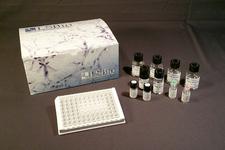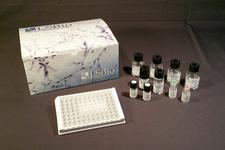order histories, retained contact details for faster checkout, review submissions, and special promotions.
Forgot password?
order histories, retained contact details for faster checkout, review submissions, and special promotions.
Location
Corporate Headquarters
Vector Laboratories, Inc.
6737 Mowry Ave
Newark, CA 94560
United States
Telephone Numbers
Customer Service: (800) 227-6666 / (650) 697-3600
Contact Us
Additional Contact Details
order histories, retained contact details for faster checkout, review submissions, and special promotions.
Forgot password?
order histories, retained contact details for faster checkout, review submissions, and special promotions.
PARP1
poly (ADP-ribose) polymerase 1
Involved in the base excision repair (BER) pathway, by catalyzing the poly(ADP-ribosyl)ation of a limited number of acceptor proteins involved in chromatin architecture and in DNA metabolism. This modification follows DNA damages and appears as an obligatory step in a detection/signaling pathway leading to the reparation of DNA strand breaks. Mediates the poly(ADP-ribosyl)ation of APLF and CHFR. Positively regulates the transcription of MTUS1 and negatively regulates the transcription of MTUS2/TIP150. With EEF1A1 and TXK, forms a complex that acts as a T-helper 1 (Th1) cell-specific transcription factor and binds the promoter of IFN-gamma to directly regulate its transcription, and is thus involved importantly in Th1 cytokine production. Required for PARP9 and DTX3L recruitment to DNA damage sites. PARP1-dependent PARP9-DTX3L-mediated ubiquitination promotes the rapid and specific recruitment of 53BP1/TP53BP1, UIMC1/RAP80, and BRCA1 to DNA damage sites.
| Gene Name: | poly (ADP-ribose) polymerase 1 |
| Synonyms: | PARP1, ADPRT, ADP-ribosyltransferase NAD(+), Adp-ribosyltransferase, ADPRT1, ARTD1, ADPRT 1, Poly(ADP-ribose) synthetase, Poly(ADP-ribosyl)transferase, PARP, Poly [ADP-ribose] polymerase 1, PADPRT-1, PARP-1, Poly (ADP-ribose) polymerase 1, Poly(ADP-ribose) polymerase, Poly[ADP-ribose] synthase 1, PPOL |
| Target Sequences: | NM_001618 NP_001609.2 P09874 |
Publications (6)












If you do not find the reagent or information you require, please contact Customer.Support@LSBio.com to inquire about additional products in development.











